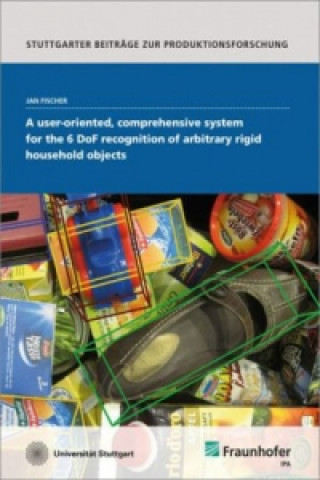
Kód: 09926638
A user-oriented, comprehensive system for the 6 DoF recognition of arbitrary rigid household objects.
Autor Jan Fischer
The objective of this thesis is the development of a model-based object recognition system for the 6 degrees of freedom localization of typical rigid household objects that explicitly enables an intuitive teaching of new objects. ... celý popis
- Jazyk:
 Angličtina
Angličtina - Väzba: Brožovaná
- Počet strán: 159
Nakladateľ: Fraunhofer Verlag, 2015
- Viac informácií o knihe

48.78 €
Bežne: 51.34 €
Ušetríte 2.56 €
Dostupnosť:
50 % šanca Máme informáciu, že by titul mohol byť dostupný. Na základe vašej objednávky sa ho pokúsime do 6 týždňov zabezpečiť.
Máme informáciu, že by titul mohol byť dostupný. Na základe vašej objednávky sa ho pokúsime do 6 týždňov zabezpečiť.Prehľadáme celý svet
Mohlo by sa vám tiež páčiť
-
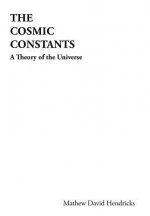
Cosmic Constants
19.81 € -19 % -

Factors Affecting Customers' Decisions to Buy Retail Banking Services
66.47 € -
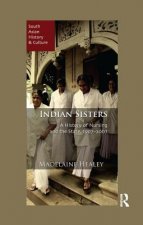
Indian Sisters
68.60 € -

Successful Change and Transformation Management
20.32 € -

Mesoamerican History: A Captivating Guide to Four Ancient Civilizations That Existed in Mexico
18.90 € -2 % -
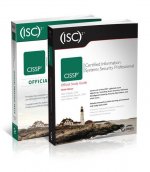
(ISC)2 CISSP Certified Information Systems Securit y Professional Official Study Guide & Practice Tes ts Bundle, 3rd Edition
69.41 € -26 % -

Telemann: Fantasie, Britten: Metamorfózy / Vilém Veverka - hoboj - CD
24.79 €
Darčekový poukaz: Radosť zaručená
- Darujte poukaz v ľubovoľnej hodnote, a my sa postaráme o zvyšok.
- Poukaz sa vzťahuje na všetky produkty v našej ponuke.
- Elektronický poukaz si vytlačíte z e-mailu a môžete ho ihneď darovať.
- Platnosť poukazu je 12 mesiacov od dátumu vystavenia.
Informovať o naskladnení knihy
Zadajte do formulára e-mailovú adresu a akonáhle knihu naskladníme, zašleme vám o tom správu. Postrážime všetko za vás.
Viac informácií o knihe A user-oriented, comprehensive system for the 6 DoF recognition of arbitrary rigid household objects.
Nákupom získate 121 bodov
 Anotácia knihy
Anotácia knihy
The objective of this thesis is the development of a model-based object recognition system for the 6 degrees of freedom localization of typical rigid household objects that explicitly enables an intuitive teaching of new objects. When considering the perceptual process of object recognition in its entirety, it may be divided into the three main areas: data acquisition, object modeling and object localization. The different areas are examined individually and distinct contributions to each of them are presented and evaluated.§The originating conditions for the recognition process system are one-shot images of range and color data. Considering data acquisition, it is most often taken for granted that a sensor delivers directly 2.5D data or color information. However, when combining different sensor modalities, it is possible to exceed the data quality of a single sensor. The thesis follows this idea and presents a novel sensor fusion technique for data acquisition that combines the 2.5D input data from a stereo and a range imaging system.§Regarding object modeling, the thesis presents a method for dense object modeling directly on the robot using its manipulator and camera system. Additionally, two stand-alone training setups are introduced which avoid the explicit need of a robotic manipulator for object modeling. One is using a turn table to rotate the object in front of the camera system and the other one is using a chessboard where the camera is manually moved around a stationary object. Initial work conducted within the scope of this thesis proposes a fastSLAM-based in-gripper object modeling approach which is able to cope with multi-occurrences of similar textures on the object's surface. This approach is further developed and the information filter is replaced by a bundle adjustment algorithm that enables a faster registration of the individual object views.§This thesis proposes two novel binary descriptors for textured and texture-less object modeling that enable the usage of rapid bit operations to accelerate the descriptor computations. When addressing textured objects, recent fast-to-compute descriptors achieving remarkable recognition rates have been presented. This thesis proposes a scale invariant extension of the binary feature descriptor ORB, which is fast to compute while still being as descriptive as SURF. In order to distinctly describe texture-less objects, a global histogram-based descriptor is presented, that aggregates 2D and 3D gradient information from a local binary descriptor. Compared to the current state-of-the art, the descriptor exhibits scale and rotation invariance. Additionally, the underlying binary descriptor is computed faster than competing methods by the use of dynamic programming.§In order to increase the robustness of texture-less object recognition, data association is subject to a spatial constraint to take account for the spatial expansion of an object. The thesis proposes an adaptive sliding window approach to build up a probability map for prominent object locations. Based on a non-maximum suppression algorithm, the dominant object locations are selected.§The different components have been integrated in a software framework for 6 DoF object recognition that has been implemented on the service robot Care-O-bot. 3 using the middleware ROS. The software components for data acquisition, object modeling and object recognition are evaluated individually using standard datasets and typical real world household objects like plates, bottles or cups.
 Parametre knihy
Parametre knihy
48.78 €
- Celý názov: A user-oriented, comprehensive system for the 6 DoF recognition of arbitrary rigid household objects.
- Autor: Jan Fischer
- Jazyk:
 Angličtina
Angličtina - Väzba: Brožovaná
- Počet strán: 159
- EAN: 9783839608913
- ISBN: 3839608910
- ID: 09926638
- Nakladateľ: Fraunhofer Verlag
- Hmotnosť: 240 g
- Rozmery: 210 × 144 × 12 mm
- Dátum vydania: 01. October 2015
Obľúbené z iného súdka
-

Berserk Deluxe Volume 1
44.31 € -12 % -

Berserk Deluxe Volume 2
52.03 € -22 % -

Haunting Adeline
30.69 € -

Cry Baby Coloring Book
9.75 € -13 % -

Hunting Adeline
31.70 € -

Berserk Deluxe Volume 3
48.68 € -4 % -

The Official Stardew Valley Cookbook
22.05 € -24 % -

Powerless
11.88 € -8 % -

Atomic Habits
16.36 € -29 % -

Berserk Deluxe Volume 4
46.44 € -8 % -

White Nights
3.55 € -

Gravity Falls Journal 3
18.29 € -14 % -

Chainsaw Man, Vol. 15
10.36 € -23 % -

Iron Flame
16.15 € -25 % -

Berserk Deluxe Volume 5
50.30 € -1 % -

JUJUTSU KAISEN V22
9.65 € -28 % -
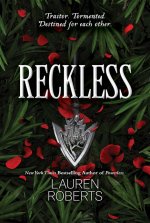
Reckless
11.78 € -18 % -

Harry Potter and the Prisoner of Azkaban (Minalima Edition)
27.03 € -33 % -

No Longer Human
13.41 € -17 % -

Surrounded by Idiots
10.66 € -28 % -

BALLAD OF SWORD & WINE QIANG JIN JIU V01
17.17 € -18 % -
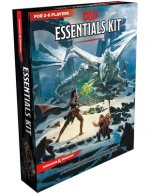
Dungeons & Dragons Essentials Kit (D&d Boxed Set)
30.18 € -

House of Leaves
23.17 € -23 % -

A Little Life
17.47 € -

Twisted Love
9.75 € -24 % -

Heaven Official's Blessing: Tian Guan Ci Fu (Novel) Vol. 1
17.98 € -15 % -

The 48 Laws of Power
24.49 € -10 % -

Bungo Stray Dogs, Vol. 8 (light novel)
16.56 € -

Twisted Games
9.75 € -18 % -
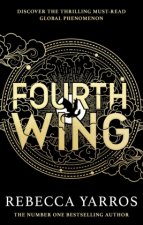
Fourth Wing
10.15 € -21 % -
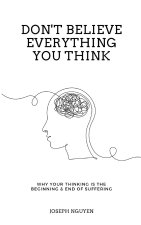
Don't Believe Everything You Think
13 € -20 % -

Twisted Lies
9.75 € -18 % -

Berserk Deluxe Volume 6
51.02 € -
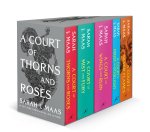
Court of Thorns and Roses Paperback Box Set (5 books)
49.90 € -20 % -

The Courage To Be Disliked
10.97 € -8 % -

Once Upon A Broken Heart
9.85 € -17 % -

Court of Thorns and Roses
9.24 € -22 % -
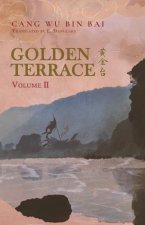
Golden Terrace: Volume 2
14.12 € -33 % -

Romancing Mister Bridgerton
9.54 € -23 % -

Court of Mist and Fury
9.34 € -19 % -

Heaven Official's Blessing: Tian Guan Ci Fu (Novel) Vol. 5
17.37 € -13 % -

Twisted Hate
10.15 € -21 % -

Before the Coffee Gets Cold
10.46 € -29 % -
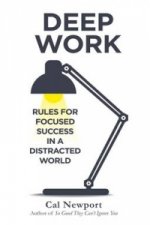
Deep Work
15.24 € -29 % -

The Creative Act
23.98 € -19 % -

Icebreaker
9.14 € -23 % -

Heaven Official's Blessing: Tian Guan Ci Fu Vol. 4
18.59 € -12 % -
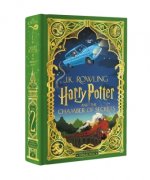
Harry Potter and the Chamber of Secrets: MinaLima Edition
29.98 € -16 % -
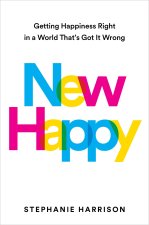
New Happy
23.27 € -18 %
Osobný odber Bratislava a 2642 dalších
Copyright ©2008-24 najlacnejsie-knihy.sk Všetky práva vyhradenéSúkromieCookies


 21 miliónov titulov
21 miliónov titulov Vrátenie do mesiaca
Vrátenie do mesiaca 02/210 210 99 (8-15.30h)
02/210 210 99 (8-15.30h)